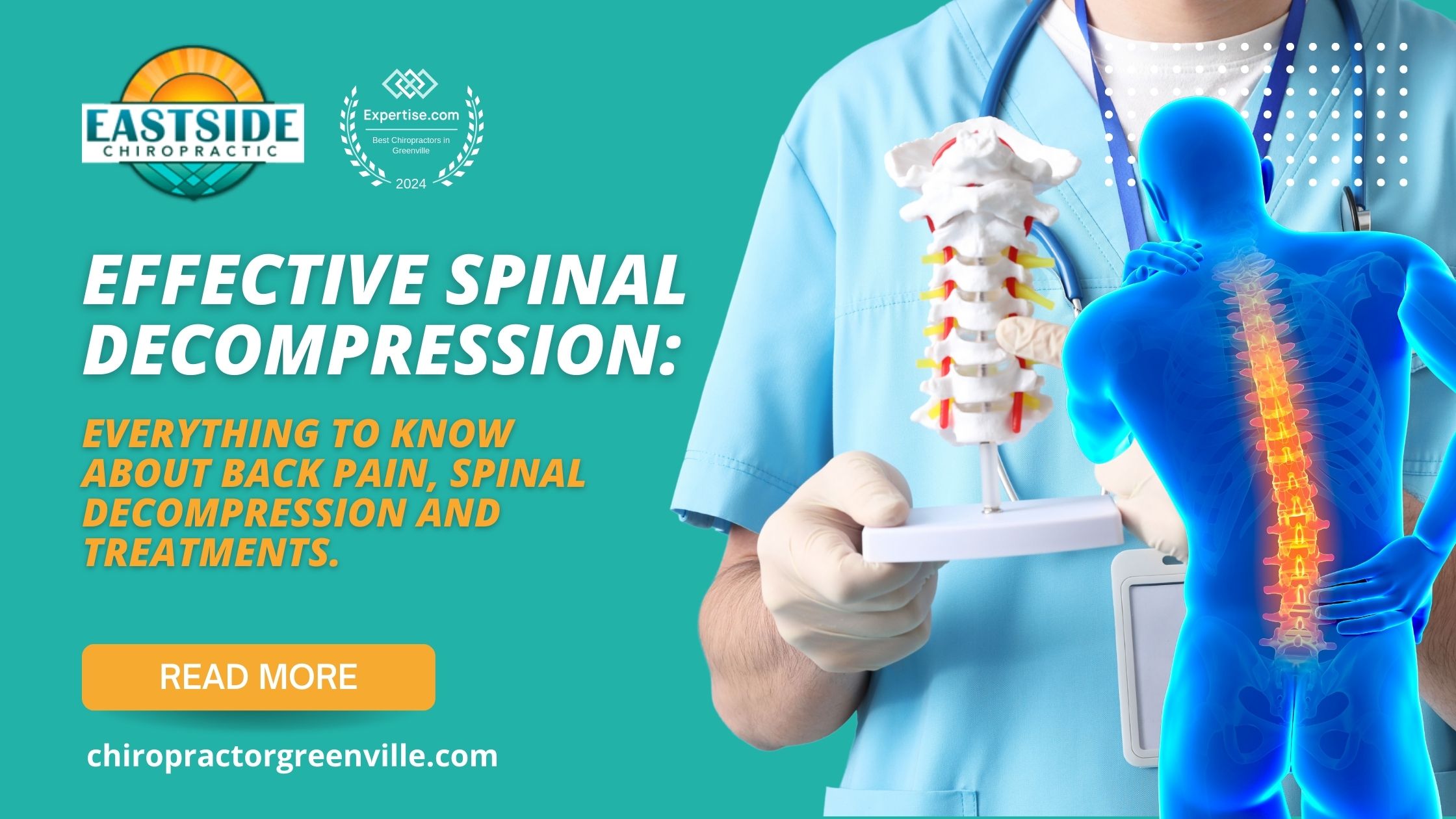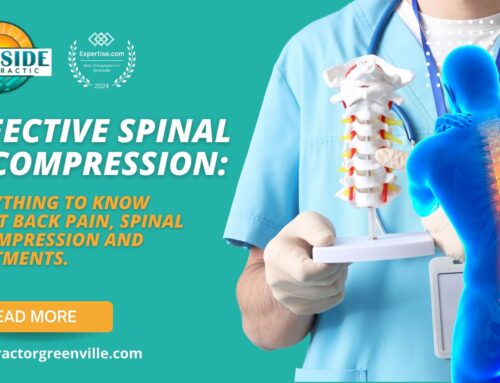Introduction
Have you ever experienced that nagging back pain that just won’t go away? Or maybe you’ve noticed that your neck feels like it’s carrying the weight of the world. Lucky for us, the world of chiropractic care has developed some incredible solutions to keep our spines in top shape. One such method gaining attention is spinal decompression. In this article, we’ll dive into what spinal decompression entails, its success rate, and why Eastside Chiropractic PA in Greenville, SC, might be your go-to solution.
What is Spinal Decompression?
Definition
Spinal decompression is a non-invasive and sometimes surgical method designed to relieve pressure on the spine. By gently stretching the spine, the treatment aims to change its force and position, alleviating pain caused by various conditions.
Techniques Used in Spinal Decompression
There are multiple techniques involved, ranging from mechanical traction to using advanced equipment like decompression tables. These approaches focus on reducing spinal load, improving blood flow, and allowing vital nutrients to reach affected areas.
Types of Spinal Decompression
Surgical Spinal Decompression
This involves surgical procedures such as laminectomy or discectomy where parts of the bone or herniated disc are removed to provide relief. Generally, this option is for severe cases.
Non-surgical Spinal Decompression
This is the more common approach used in chiropractic care. Patients lie on a motorized table while the chiropractor uses traction to stretch and relax the spine methodically.
How Spinal Decompression Therapy Works
Steps Involved in the Therapy
To demystify it a bit, imagine slowly pulling apart a sandwich to let the filling settle evenly. That’s somewhat similar to how spinal decompression works:
1. Assessment: Patient evaluation to tailor the treatment.
2. Positioning: Patient lies down on a decompression table.
3. Traction: The table uses a controlled force to stretch the spine.
4. Relaxation: Alternating periods of relaxation and traction allow the spine to decompress gradually.
Equipment Used
Typically, sophisticated decompression tables equipped with computer-operated traction mechanisms help in delivering precise treatment, ensuring both safety and effectiveness.
Common Conditions Treated by Spinal Decompression
Herniated Discs
When the soft tissue between vertebrae bulges out, it can pinch nerves, causing intense pain. Spinal decompression helps retract these discs.
Sciatica
This condition causes pain along the sciatic nerve, which runs down your legs. Decompression relieves the nerve pressure, reducing pain and discomfort.
Degenerative Disc Disease
Over time, our spinal discs naturally wear out. Decompression can alleviate the associated pain by restoring proper alignment.
Spinal Stenosis
A narrowing of the spaces within your spine puts pressure on the nerves. Decompression therapy can open up these spaces, providing relief.
Benefits of Spinal Decompression
Pain Relief
First and foremost, spinal decompression offers significant pain reduction. Many patients experience notable improvements after just a few sessions.
Improved Mobility
By addressing spinal issues, patients often regain lost mobility, enabling them to return to daily activities with ease.
Minimally Invasive Nature
Compared to surgical options, non-surgical spinal decompression is a low-risk, non-invasive treatment with little to no recovery time.
Who is a Good Candidate for Spinal Decompression?
Ideal Patients
Individuals suffering from chronic back or neck pain due to specific conditions (like herniated discs or sciatica) are typically good candidates.
Conditions That May Prevent Decompression Therapy
People with severe osteoporosis, spinal fusion, or certain types of cancer may not be suitable for decompression therapy. A thorough consultation will help determine eligibility.
The Success Rate of Spinal Decompression
General Statistics
The success rate of spinal decompression therapy can be quite impressive, often ranging between 70-90%. However, outcomes can vary based on individual conditions and adherence to treatment plans.
Factors Influencing Success Rates
Several factors play into the overall success rate, including the severity of the condition, the patient’s general health, and how faithfully one follows post-treatment care guidelines.
Decompression Therapy Success Rate: Clinical Studies and Evidence
Summary of Clinical Studies
Various clinical studies underscore the decompression therapy success rate. Many report that a significant majority of patients experience relief from chronic pain and notable improvements in mobility.
Patient Testimonials
Real-world testimonials add a personal touch to the success stories. Numerous patients have recounted their positive experiences, illustrating the therapy’s transformative potential.
Spinal Decompression at Eastside Chiropractic PA, Greenville, SC
Introduction to Eastside Chiropractic PA
If you’re based in Greenville, SC, and seeking spinal decompression, Eastside Chiropractic PA is the place to be. Known for its top-notch services and professional care, you’re in safe hands.
Services Offered
From spinal decompression to general chiropractic services, Eastside Chiropractic PA offers a wide range of treatments tailored to meet individual needs.
Specialties in Spinal Decompression
Eastside Chiropractic PA specializes in non-surgical spinal decompression, employing advanced techniques and state-of-the-art equipment to ensure optimal outcomes.
Why Choose Eastside Chiropractic PA for Spinal Decompression?
Experienced Practitioners
With years of experience under their belts, the practitioners at Eastside Chiropractic PA are well-versed in delivering effective spinal decompression therapy.
State-of-the-art Equipment
The facility boasts cutting-edge decompression tables and diagnostic tools, ensuring that you receive the best possible care.
Patient-centered Approach
From the moment you walk in, you are the focus. The team tailors every aspect of care to your specific needs, ensuring a comfortable and effective treatment journey.
What to Expect During Your First Visit
Initial Consultation
Your first visit kicks off with an initial consultation where practitioners assess your history and symptoms to create a tailored treatment plan.
Diagnostic Tests
Various diagnostic tests, including X-rays or MRIs, may be conducted to get a clear picture of your spinal health.
Treatment Plan Overview
You’ll receive a detailed overview of your treatment plan, outlining what to expect and how the therapy will proceed.
Frequently Asked Questions About Spinal Decompression
Common Queries
1. Is the Spinal Decompression procedure painful?
– Most patients find the therapy quite comfortable and relaxing.
2. How long does each Spinal Decompression session last?
– Sessions usually last between 30 to 45 minutes.
3. When will I start to see results?
– Many patients notice improvements after a few sessions, although the timeline can vary.
Expert Answers
Let the experts at Eastside Chiropractic PA guide you with answers based on years of experience and a deep understanding of spinal health.
Tips for Maximizing the Benefits of Spinal Decompression Therapy
Post-treatment Care
Adhering to post-treatment guidelines can significantly enhance the benefits of spinal decompression.
Lifestyle Changes and Exercises
Incorporate exercises and lifestyle changes as recommended by your chiropractor to maintain spinal health and prevent future issues.
Conclusion
Spinal decompression is a powerful, non-invasive solution to chronic back and neck pain, offering significant relief and improved mobility. If you’re in Greenville, SC, considering this therapy, Eastside Chiropractic PA stands ready to guide you on your journey to better spinal health. Why wait? Schedule your consultation today!
Additional FAQs
1. Can spinal decompression help with knee pain?
– While primarily focused on the spine, decompression can sometimes alleviate referred pain in the knees.
2. Is spinal decompression safe for older adults?
– Yes, it is generally safe for older adults, but individual assessments are necessary.
3. What if I don’t see improvements?
– Alternative treatments or adjustments to the therapy plan may be explored.
4. Are there any side effects?
– Minor side effects like muscle soreness can occur but usually subside quickly.
5. How often should I undergo spinal decompression therapy?
– The frequency will depend on your specific condition and response to treatment; your chiropractor will provide a tailored schedule.


